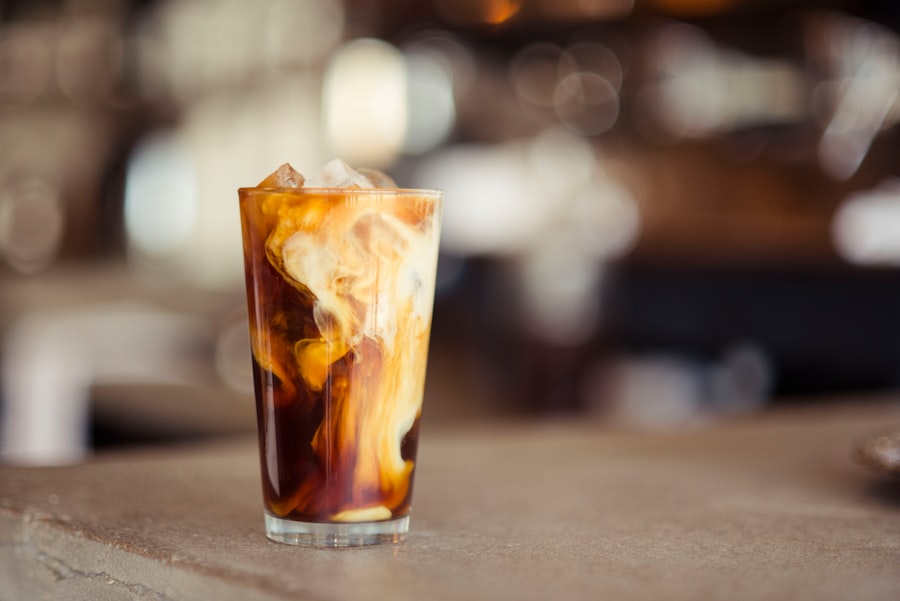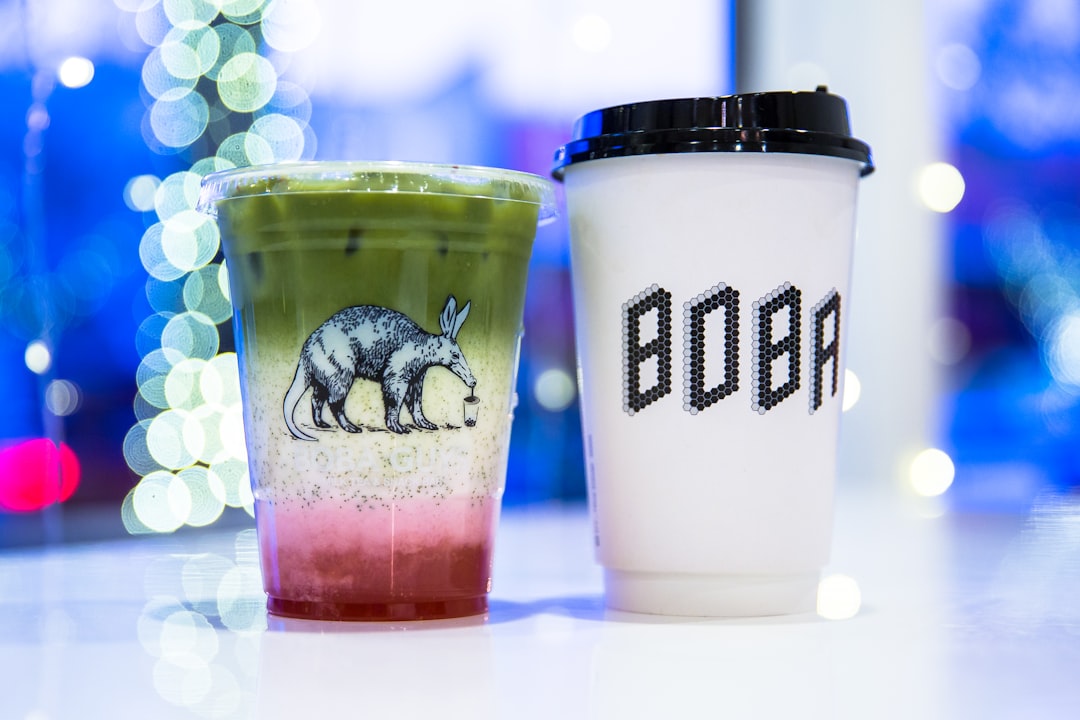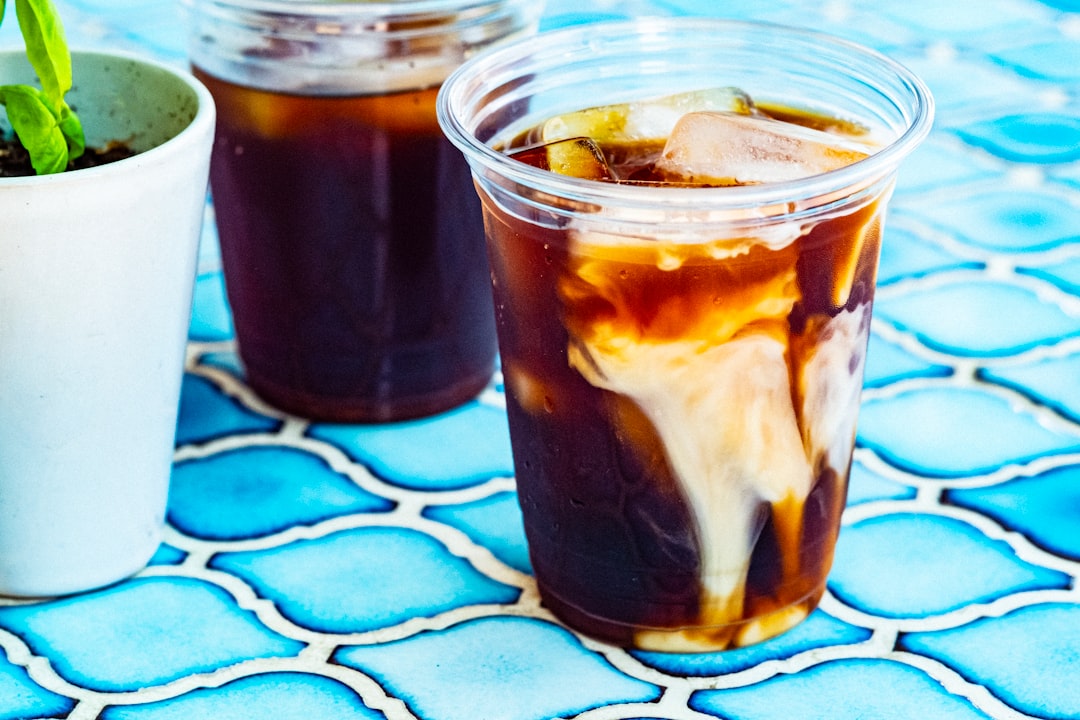Milk tea is a delightful beverage that combines the robust flavors of brewed tea with the creamy richness of milk. This fusion creates a drink that is both comforting and invigorating, appealing to a wide range of palates. The base of milk tea can be any type of tea, including black, green, or oolong, which is then blended with milk or a milk alternative.
Sweeteners such as sugar, honey, or flavored syrups are often added to enhance the taste, resulting in a drink that can be customized to individual preferences. The texture of milk tea can vary from smooth and velvety to frothy, depending on the preparation method and the type of milk used. The versatility of milk tea extends beyond its basic ingredients.
It can be served hot or cold, making it suitable for any season. In recent years, milk tea has evolved into a cultural phenomenon, particularly with the rise of bubble tea, which incorporates chewy tapioca pearls or other toppings. This evolution has led to an explosion of flavors and styles, making milk tea a dynamic beverage that continues to capture the interest of consumers around the world.
Key Takeaways
- Milk tea is a popular beverage made from tea and milk, often sweetened and served hot or cold.
- The history of milk tea dates back to the 19th century, with origins in India and Taiwan.
- There are various types of milk tea, including bubble tea, Thai iced tea, and Hong Kong milk tea.
- Milk tea shops have seen a rise in popularity, offering a wide range of flavors and customizable options.
- When looking for the best milk tea near you, consider factors such as quality, variety, and customer reviews.
The History of Milk Tea
The origins of milk tea can be traced back to various cultures that have long enjoyed the combination of tea and milk. In the United Kingdom, the tradition of adding milk to black tea dates back to the 18th century. It is believed that this practice began as a way to temper the bitterness of strong black teas, particularly those imported from colonial territories.
The British custom of afternoon tea, popularized by Anna Maria Russell, the Duchess of Bedford, further solidified the role of milk tea in social gatherings. In Asia, particularly in countries like Taiwan and Hong Kong, milk tea has taken on unique forms and flavors. Hong Kong-style milk tea, for instance, is known for its strong brew made from a blend of black teas and is often served with evaporated or condensed milk.
This style reflects the region’s colonial history and its British influences. Meanwhile, Taiwan’s bubble tea emerged in the 1980s, introducing chewy tapioca pearls into the mix and sparking a global trend that has since expanded into countless variations.
Different Types of Milk Tea

Milk tea encompasses a wide array of styles and flavors, each with its own unique characteristics. One of the most popular types is the classic Hong Kong-style milk tea, which is brewed using a combination of black teas and served with sweetened condensed milk. This version is known for its strong flavor and smooth texture, making it a favorite among locals and tourists alike.
Another notable variant is the Taiwanese bubble tea, which features chewy tapioca pearls that add an interesting texture to the drink. Bubble tea can be customized with various flavors, including fruit-infused teas and creamy options like taro or matcha. Additionally, there are regional specialties such as Indian chai, which combines spiced black tea with milk and sugar, creating a warming beverage that is often enjoyed throughout the day.
In recent years, innovative flavors have emerged in the milk tea landscape. For example, matcha milk tea has gained popularity for its vibrant green color and health benefits associated with matcha powder. Other creative combinations include lavender milk tea and brown sugar boba, which features a rich caramel-like sweetness that has captivated many fans.
The Rise of Milk Tea Shops
| Year | Number of Milk Tea Shops | Revenue |
|---|---|---|
| 2010 | 100 | 500,000 |
| 2015 | 500 | 2,500,000 |
| 2020 | 1500 | 7,500,000 |
The proliferation of milk tea shops around the globe can be attributed to several factors, including globalization and the increasing popularity of Asian cuisine. As people become more adventurous in their culinary choices, they seek out new experiences that reflect diverse cultures. Milk tea shops have emerged as trendy destinations where consumers can enjoy not only traditional flavors but also innovative concoctions that push the boundaries of what milk tea can be.
Social media has played a significant role in this rise as well. Platforms like Instagram and TikTok have allowed milk tea shops to showcase their visually appealing drinks, often adorned with colorful toppings and artistic presentations. This visual appeal has attracted younger consumers who are eager to share their experiences online, further fueling the demand for unique and Instagram-worthy beverages.
Moreover, the COVID-19 pandemic has led to an increase in takeout and delivery options for food and beverages. Many milk tea shops adapted quickly by offering online ordering and contactless delivery services, ensuring that they remained accessible to customers during lockdowns. This adaptability has solidified their place in the beverage market as essential spots for both casual outings and quick refreshments.
How to Find the Best Milk Tea Near Me
Finding the best milk tea shop in your area can be an enjoyable adventure filled with exploration and discovery. One effective way to start your search is by utilizing online resources such as Google Maps or Yelp. These platforms provide user-generated reviews and ratings that can help you gauge the quality of different establishments.
Look for shops with high ratings and positive feedback regarding their drink quality, service, and ambiance. Social media platforms also serve as valuable tools for discovering local favorites. Many milk tea shops actively engage with their customers on Instagram or Facebook, showcasing their latest offerings and promotions.
Following local food bloggers or influencers can provide insights into trending spots and hidden gems that may not be widely known yet. Additionally, word-of-mouth recommendations from friends or family can lead you to exceptional milk tea experiences. Engaging in conversations about favorite beverages can uncover local favorites that you might not have considered otherwise.
Don’t hesitate to ask for suggestions when visiting new neighborhoods or cities; locals often have insider knowledge about where to find the best drinks.
Factors to Consider When Choosing a Milk Tea Shop

When selecting a milk tea shop to visit, several factors should be taken into account to ensure a satisfying experience. First and foremost is the quality of ingredients used in their beverages. A reputable shop will prioritize fresh ingredients, including high-quality teas and dairy or non-dairy alternatives.
Inquire about their sourcing practices if you’re curious about where they obtain their teas or if they offer organic options. Another important consideration is the variety of menu options available. A diverse menu allows you to explore different flavors and styles of milk tea while catering to various dietary preferences.
Look for shops that offer customizable options, such as sweetness levels or alternative toppings like fruit jellies or pudding. The atmosphere of the shop also plays a crucial role in your overall experience. A welcoming environment with comfortable seating can enhance your enjoyment while sipping your drink.
Some shops may even provide a cozy ambiance conducive to socializing or studying, making them ideal spots for gathering with friends or spending time alone.
Popular Milk Tea Chains
Several popular milk tea chains have made significant impacts on the beverage landscape globally. One such chain is Gong Cha, which originated in Taiwan and has expanded internationally with numerous locations worldwide. Known for its high-quality teas and customizable drinks, Gong Cha offers a wide range of flavors and toppings that cater to diverse tastes.
Another prominent player is Chatime, which has gained recognition for its innovative menu featuring both classic and unique flavors. With locations across multiple countries, Chatime emphasizes freshness by brewing their teas daily and using natural ingredients whenever possible. Tiger Sugar has also made waves in recent years with its signature brown sugar boba drinks that feature a visually striking swirl effect created by caramelized brown sugar syrup.
This chain has garnered a dedicated following due to its unique flavor profile and aesthetic appeal.
Local Milk Tea Shops to Try
While popular chains offer consistency and familiarity, local milk tea shops often provide unique flavors and personalized service that can enhance your experience. Exploring these establishments can lead you to hidden gems within your community. For instance, if you live in a city with a vibrant Asian community, you may find family-owned shops that serve traditional recipes passed down through generations.
In urban areas, look for shops that focus on artisanal approaches to brewing their teas or those that experiment with seasonal ingredients. These local spots may offer limited-time specials that reflect current trends or local flavors, providing an opportunity to try something new. Additionally, many local shops prioritize sustainability by using eco-friendly packaging or sourcing ingredients from local farmers.
Supporting these businesses not only contributes to your community’s economy but also allows you to enjoy delicious beverages while promoting responsible practices.
Tips for Making Your Own Milk Tea at Home
Creating your own milk tea at home can be a rewarding experience that allows you to customize flavors according to your preferences. Start by selecting your base tea; black teas like Assam or Earl Grey work well for traditional styles, while green teas like jasmine or matcha offer lighter alternatives. Once you’ve brewed your tea to your desired strength, it’s time to add milk or a non-dairy alternative such as almond or oat milk.
Experimenting with different ratios will help you find the perfect balance between creaminess and flavor intensity. Sweeteners can also be adjusted based on personal taste; consider using honey or agave syrup for a natural touch. For those interested in adding texture to their homemade creations, consider incorporating tapioca pearls or other toppings like grass jelly or fruit jellies.
These additions can elevate your drink from simple to extraordinary while providing an authentic touch reminiscent of your favorite bubble tea shop.
Health Benefits of Milk Tea
Milk tea not only satisfies cravings but also offers several health benefits depending on its ingredients. The primary component—tea—contains antioxidants known as polyphenols that may help reduce inflammation and support heart health. Black teas are particularly rich in flavonoids, which have been linked to improved cardiovascular function.
When combined with milk or non-dairy alternatives, milk tea provides essential nutrients such as calcium and vitamin D (in fortified options). These nutrients contribute to bone health and overall well-being. Additionally, certain types of teas like green tea are known for their metabolism-boosting properties due to their caffeine content and catechins.
However, it’s essential to consume milk tea mindfully; excessive sugar intake from sweetened versions can negate some health benefits. Opting for less sweetened options or using natural sweeteners can help maintain a healthier balance while still enjoying this beloved beverage.
The Future of Milk Tea
As consumer preferences continue to evolve, the future of milk tea appears promising with ongoing innovations in flavors and preparation methods. The trend toward healthier options may lead to an increase in demand for organic ingredients and lower-calorie alternatives without sacrificing taste. Sustainability will likely play an increasingly important role in shaping the industry as consumers become more conscious about environmental impacts.
Expect more shops to adopt eco-friendly practices such as biodegradable packaging or sourcing locally grown ingredients. Furthermore, technology will continue influencing how consumers interact with milk tea shops through mobile ordering apps and loyalty programs designed to enhance customer experiences. As new trends emerge—such as plant-based milks or unique flavor infusions—the world of milk tea will undoubtedly remain dynamic and exciting for enthusiasts everywhere.



